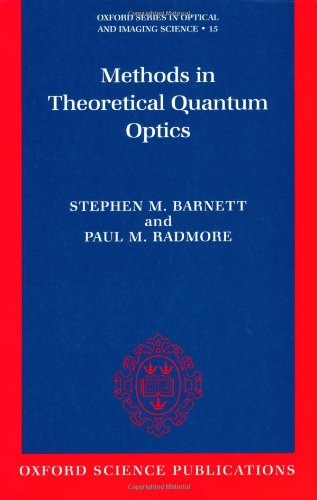Methods in theoretical quantum optics ebook download
Par bono daniel le mercredi, juin 1 2016, 17:30 - Lien permanent
Methods in theoretical quantum optics. Paul M. Radmore, Stephen M. Barnett

Methods.in.theoretical.quantum.optics.pdf
ISBN: 0198563620,9780198563624 | 293 pages | 8 Mb

Methods in theoretical quantum optics Paul M. Radmore, Stephen M. Barnett
Publisher: Oxford University Press, USA
More direct methods also exist , in which elements of the wave function appear in a single measurement. Letters in July 2010, under the title “Unveiling a Truncated Optical Lattice Associated with a Triangular Aperture Using Light's Orbital Angular Momentum”. The wave function plays a fundamental role in quantum theory, yet a direct observation of it remains elusive. April 20th, 2013 reviewer Leave a comment Go to comments. Raymer, “Continuous-Variable Optical Quantum-State Tomography,” Rev. Non-FT quantum ( and classic) evolutions may shed new light on existing models, offer new relevant models for quantum evolutions, and lead to substantial new insights on related physical questions, models, theories, and computational methods. The project's main target is merging quantum optics and many-body physics of quantum gases, using theoretical methods of atomic and condensed matter physics. Mechanical Engineer graduated in the Escola de Engenharia da Universidade Federal de Minas Gerais- UFMG, (Brazil), 1973 author of the book Quantum Ring Theory-Foundations for Cold Fusion, published in 2006. Methods in theoretical quantum optics : PDF eBook Download. We show how various mathematical formalisms, specifically the catastrophe formalism and group theory, aid in the study of relevant systems in quantum optics. Relying on the theoretical and experimental methods of condensed matter physics and quantum optics. Barnett Publisher: Oxford University Press, USA. Observable properties, such as the position of an the quantum system to reconstruct the wave function. The principal aim of Quantum Ring Theory . However, a quantum state is a small amount of information, typically carried by a single photon, so many methods used in ordinary communication are out of the question (including broadcasting). Aram's classical fault-tolerance test indeed poses a major challenge to quantum information theory, but I regard my explanation that is based on Conjecture 1 not only as adequate but also as advantageous compared to ..